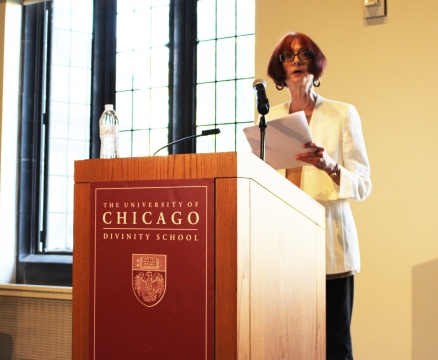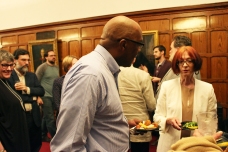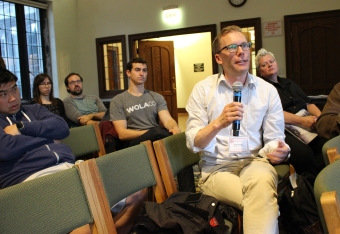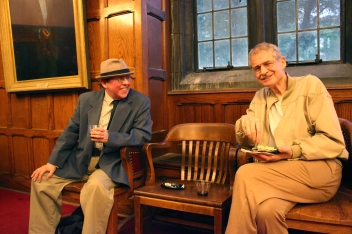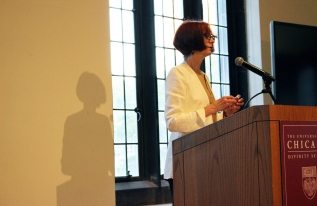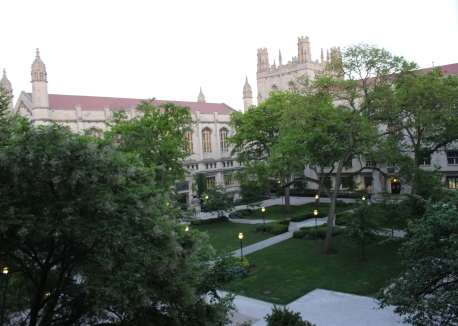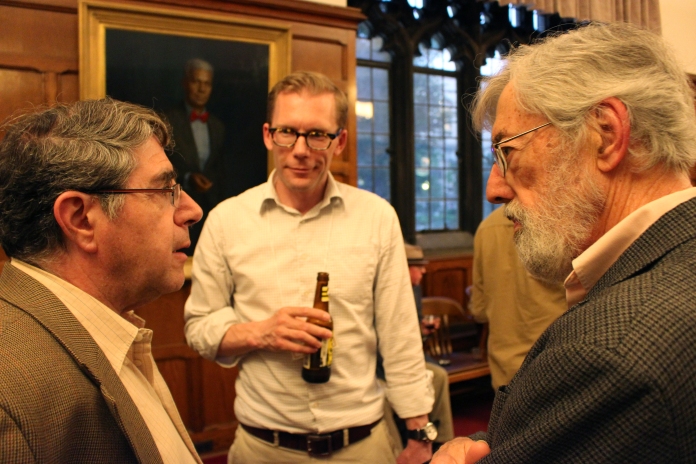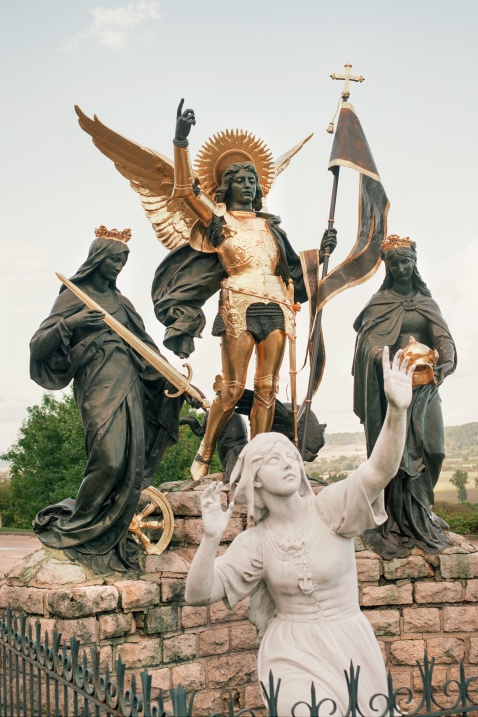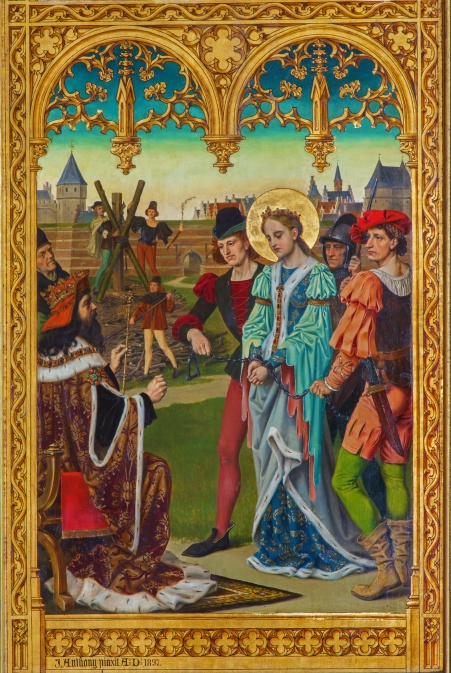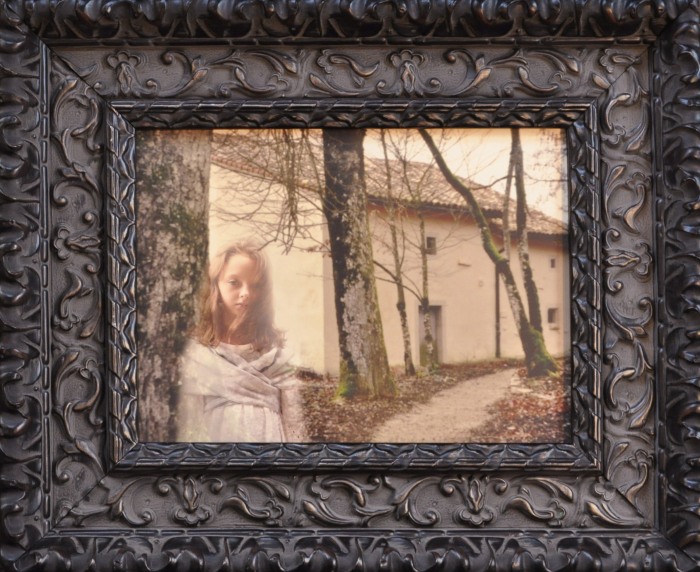
In 2013, Chicago artist Susan Aurinko visited a 12th century chateau in France’s Loire Valley that was once the temporary home of Joan of Arc. Aurinko returned again and again to photograph the actual places where Joan of Arc once lived or visited, using these layered images to explore Joan’s passion, from her inspired childhood to her military victories, brief political triumph, capture, suffering, and martyrdom. The photographic exhibit of Aurinko’s work at the Loyola Museum of Art in Chicago, “Searching for Jehanne: The Joan of Arc Project,” suggests the ways Joan lives on as a cultural and religious icon, preserved in sculpture, film, and popular memory. Many of the photographs in the exhibit are images of statues of Joan praying or striding triumphantly with her banner, superimposed on dark, churchlike interiors. Other photographs show wistful little girls with faraway eyes standing in the woods or next to rural outbuildings. Some images show teenaged young women in chainmail looking devout and vulnerable. These images float towards viewers with varying levels of immediacy, yet because all are housed in thick, dark, ornate frames, we are reminded of Joan’s distance and separation from us by time and constructed memory. Joan’s words, taken from her trial transcripts, accompany each photograph as a kind of narration or inner monologue.
These various photographic images of Joan—some as hard and remote as a marble statue, some as immediate and moving as a little child peering out through her own windblown hair—remind us that Joan is made and remade for us by religion, the state, and the media, but that we also make Joan what we need her to be. Here Joan is emotional, vulnerable, naïve, and devout, swept up inexorably by forces beyond her control that she cannot fully understand. Joan is also unswerving, courageous, and inspired, a person of frankness, conviction, and great integrity who survived not only the medieval battlefield but months of imprisonment, including physical hardship and deprivation, psychological torture, and probable sexual assault at the hands of military captors and religious tormentors.
Looking at these images inspired by Joan, their subject suspended so near, yet fixed at a distance by dark frames of culture and history, I am reminded of Vita Sackville-West’s Saint Joan of Arc, a biography written in the 1930s by one of England’s most prominent women writers, an admirer and self-confessed nonbeliever who eventually admits to new-found respect for miracles and the supernatural as a result of her research into Joan’s life. Like Aurinko’s photographs bringing us close to Joan yet insisting on our inability to really know her, Sackville-West’s biography alternates between feminizing Joan and marveling at the alien nature of her saintly masculinity. Sackville-West attributes Joan’s shrewdness to “feminine intuition,” and downplays the physical vigor that allowed Joan to spend nearly a week in armor without taking it off even to sleep. She dwells on Joan’s frequent tears: “She was, in fact, emotional, and wept copiously at every possible opportunity—as queer a mixture of feminine and masculine attributes as ever relentlessly assaulted the enemy and then must cry on seeing him hurt.”[1] She notes that witnesses described Joan’s impatience as that of “a woman great with child,”[2] and in her biography she sometimes calls Joan “a girl dressed up.”[3] Such strategies are perhaps designed to bring Joan nearer to people who want their saints to be more “normal,” more intelligible as properly-gendered, tender-hearted beings.
At the same time, Sackville-West acknowledges the things about Joan that distance her from the ways many people still think young girls should feel and act. She finds it to be incontrovertible that Joan possessed the gift of prophecy; she also marvels, with nearly religious wonder, that Joan leapt 60 or 70 feet from a tower trying to escape her captors, yet emerged unharmed. She guesses that the Dauphin Charles must have found Joan an “alarming savior,”[4] and imagines that because Joan “was not really a soldier at all; she was not even a man,”[5] she must have had an “astonishing effect”[6] on the troops.
Sackville-West is most impressed by Joan’s courage in leaving her childhood and her village to move beyond the familiar, and seems pleased that unlike many saints, Joan never used expressions like “my heavenly Spouse,” or “my Betrothed.” Sackville-West writes:
She is the least sentimental of saints, and the most practical . . . She is too heroic and bracing to appeal intimately to the average mind. She makes the mistake of being always something over life-size; something which, however much she may command admiration and respect, can never be loved in quite the same personal way as the more human saints.[7]
I laughed when I first read this passage, in part because it is funny, but also because this sentiment about Joan is a common one. Joan remains a strange saint for many people. Despite the extraordinary record we possess of her actual words at her trial, she can seem oddly unknowable. Is this because she leaves her girlhood behind? Is her tender girlhood the thing we cling to as familiar and knowable, because her warrior’s ruthlessness seems too harsh? Sackville-West’s characterization of Joan’s heroically virtuous nature as a “mistake” is a humorous jab at conventional notions that it is more important for a woman to be loved than it is for her to do great things. As these words suggest, it is this ability to be loved that is so reassuring; a woman who does great things without being especially lovable is terrifying. When Sackville-West finally allows herself to imagine Joan as a warrior, she calls her “The Maid,” the title given her by the common people signifying Joan’s status as the figure of myth destined to deliver France from English occupation: “no soft saintly girl, but a stern and angry young captain with very definite ideas of her own,”[8] and “that inexplicable character, the girl-boy captain—La Pucelle.”[9]
Contemplating Joan’s martyrdom allows tenderness and pity to soften Sackville-West’s sense of Joan’s strangeness. Deeply moved by Joan’s death, Sackville-West notes that “many wept,” and notes the care for others Joan demonstrated in warning the priest holding a crucifix for her to get down off her burning pyre. As her biography nears its close, Sackville-West recounts the miracles surrounding Joan’s death without a trace of skepticism—the name of Jesus writ large in the flames, the English soldier who saw a white dove fly out of the fire and wing its way towards France, the executioner traumatically frightened by the refusal of Joan’s heart to burn.
Similarly, Susan Aurinko’s pictures at LUMA also suggest a figure we never quite know, yet who fascinates and moves us. The mystery of Joan’s nature, of virtuous courage at the intersection of human and divine, is the essence of Joan’s appeal, and this sense of mystery pervades these photographs and this installation.
The show runs through October 21, 2017 at the Loyola University Museum of Art, 820 North Michigan Avenue. Admission is free through November 11, 2017.
On October 17 from 6:00 to 7:30, LUMA will host a panel with University of Chicago Professor Françoise Meltzer, author of For Fear of the Fire: Joan of Arc and the Limits of Subjectivity; Loyola University Chicago professor Bren Ortega Murphy; and artist Susan Aurinko on “Joan of Arc in Contemporary Culture,” a conversation about the lasting legacy and cultural significance of this venerated saint. For more information go to: https://www.luc.edu/luma/education_outreach/publicprogramsandevents/paneldiscussionjoanofarcincontemporaryculture.shtml
[1] Vita Sackville-West, Saint Joan of Arc (New York: Doubleday, 1991), 11.
[2] Saint Joan of Arc, 89.
[3] Saint Joan of Arc, 149.
[4] Saint Joan of Arc, 112.
[5] Saint Joan of Arc, 149.
[6] Saint Joan of Arc, 149.
[7] Saint Joan of Arc, 335.
[8] Saint Joan of Arc, 154.
[9] Saint Joan of Arc, 162.
Jaime Hovey is Associate Program Director for Virtue, Happiness, & the Meaning of Life.


